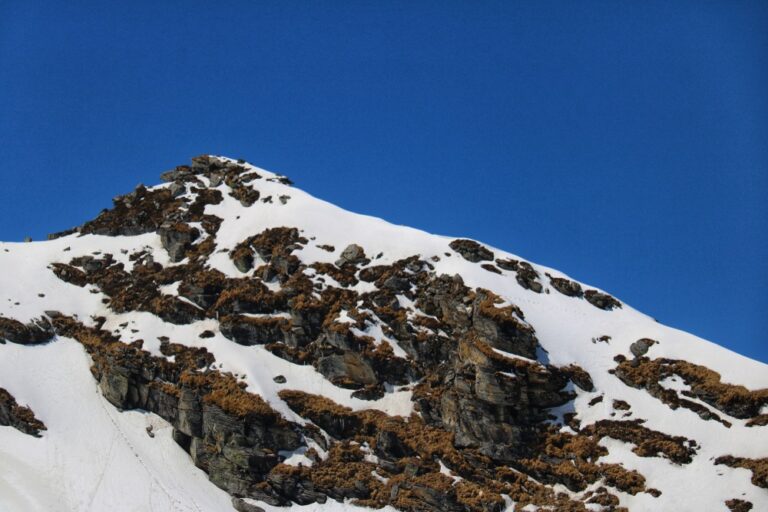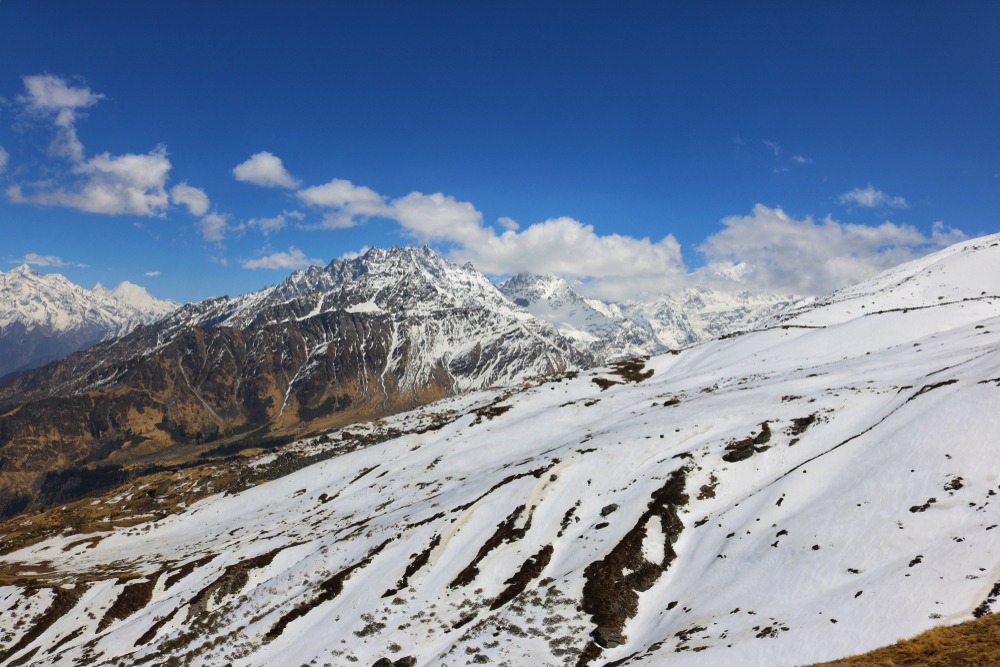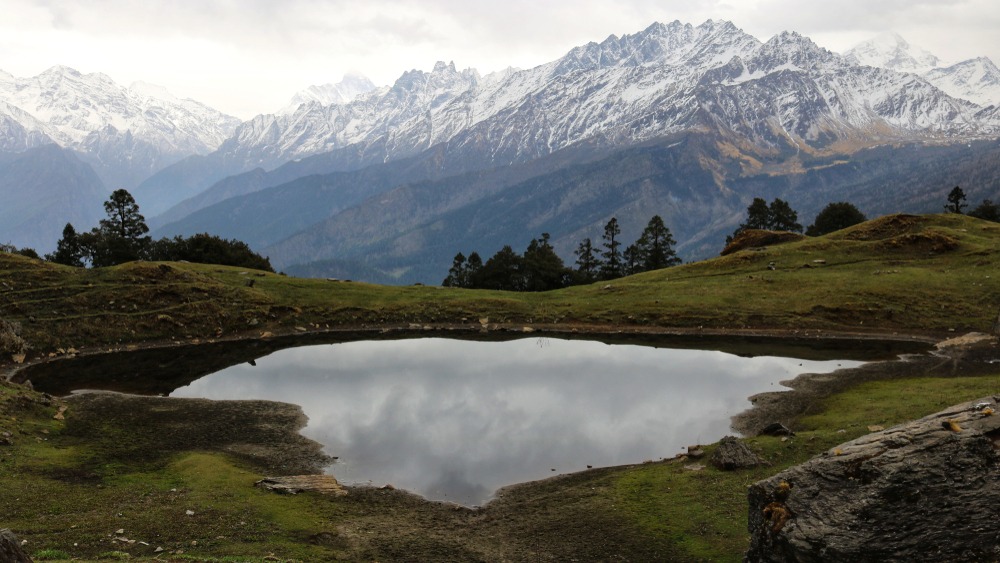
Contents
Are you ready to embark on an epic journey to conquer Pangarchulla Peak with me? Sit back, relax, and let me guide you through the ins and outs of this exhilarating adventure. Pangarchulla Peak, standing tall at 4,700 meters in Uttarakhand, India, is not for the faint of heart. But with the right preparation and mindset, we can conquer this majestic peak together.
Understanding Pangarchulla Peak
Pangarchulla Peak, a towering giant in the Garhwal Himalayas, commands respect from seasoned mountaineers and casual adventurers alike. Its snow-capped summit offers a panoramic vista of the surrounding valleys and peaks, a sight worth every step of the challenging ascent. Located in the Chamoli district of Uttarakhand, India, this peak beckons those with a spirit of adventure and a thirst for exploration.
Rising to an elevation of 4,700 meters (15,420 feet), Pangarchulla Peak presents a formidable yet irresistible challenge to climbers. Its rocky slopes, steep ascents, and unpredictable weather conditions demand careful preparation and unwavering determination from those brave enough to attempt the climb.
Preparing for the Expedition

Embarking on a journey to conquer Pangarchulla Peak requires thorough preparation and planning. The first step is obtaining the necessary permits from the local authorities, ensuring compliance with regulations and guidelines. Pangarchulla Peak falls within the Nanda Devi Biosphere Reserve, a protected area, so it’s essential to obtain permits and follow designated routes to minimize environmental impact.
Next, arranging transportation to the trailhead and securing accommodations in nearby towns like Joshimath or Auli is essential. While there are no accommodations available on the mountain itself, there are plenty of options for lodging and dining in the surrounding areas.
Additionally, it’s crucial to research the weather conditions, trail difficulty, and any potential hazards along the route to ensure a safe and successful expedition. The weather in the Himalayas can be unpredictable, with conditions changing rapidly, so it’s essential to be prepared for all scenarios and pack accordingly.
If you’re seeking a reputable company to assist you in conquering Pangarchulla Peak, look no further than The Searching Souls. With years of experience guiding trekkers and mountaineers through the rugged terrain of the Garhwal Himalayas, The Searching Souls is your trusted partner for a safe and unforgettable expedition.
Their team of seasoned guides and support staff is dedicated to ensuring your adventure is both challenging and rewarding, with a strong emphasis on safety, sustainability, and respect for the environment. From expert route planning and navigation to high-quality gear rental and comprehensive training programs, The Searching Souls provides all the resources and support you need to tackle Pangarchulla Peak with confidence.
Essential Gear and Equipment
When it comes to gear and equipment, quality and reliability are paramount. Invest in a sturdy pair of trekking boots with excellent ankle support to navigate the rugged terrain. Opt for boots that are waterproof and breathable to keep your feet dry and comfortable throughout the trek.
Layer up with moisture-wicking clothing to regulate body temperature and stay dry during strenuous climbs. A base layer made of synthetic or merino wool will wick sweat away from your skin, while a mid-layer fleece or insulated jacket will provide warmth in chilly conditions. Finish off with a waterproof and windproof shell jacket to protect against rain, snow, and wind.
A durable backpack with ample storage space for essentials like water, snacks, and a first-aid kit is a must-have. Look for a backpack with padded shoulder straps and a hip belt for comfort and support during long days on the trail. Consider investing in a hydration system or water bottles with insulating sleeves to keep your water from freezing at higher altitudes.
Don’t forget to pack a high-quality sleeping bag, tent, and insulation layers to stay warm and comfortable during chilly nights at higher altitudes. A lightweight and packable sleeping bag rated for sub-zero temperatures will ensure a restful night’s sleep, while a four-season tent with a sturdy frame will provide shelter from the elements.
Training and Physical Conditioning
Preparing your body for the physical demands of climbing Pangarchulla Peak is essential for a successful summit bid. Start by focusing on building endurance and cardiovascular fitness through activities like hiking, running, cycling, and swimming. Aim for at least 30 minutes of moderate to vigorous exercise on most days of the week to build a solid aerobic base.
Incorporate strength training exercises into your routine to build muscle strength and endurance, focusing on the major muscle groups used in hiking and climbing, such as the legs, core, and upper body. Exercises like squats, lunges, deadlifts, push-ups, and pull-ups will help improve your overall strength and stability on the trail.
Flexibility and mobility are also essential for preventing injuries and maintaining optimal performance on the mountain. Incorporate dynamic stretching exercises into your warm-up routine to improve flexibility and range of motion in your joints and muscles. Yoga, Pilates, and foam rolling can also help release tension and improve mobility in tight muscles and connective tissues.
As your expedition date approaches, gradually increase the intensity and duration of your workouts to simulate the conditions you’ll encounter on the trail. Practice hiking with a loaded backpack to accustom your body to carrying weight over long distances and varying terrain. Aim for at least one or two challenging hikes per week, gradually increasing the elevation gain and distance as you build strength and endurance.

Navigating the trails of Pangarchulla Peak requires careful planning and attention to detail. Start by studying maps, GPS coordinates, and trail descriptions to familiarize yourself with the route and identify key landmarks along the way. Pay attention to elevation gain, trail difficulty, and potential hazards such as river crossings, steep ascents, and loose rock sections to minimize risks and maximize safety.
Consult experienced mountaineers or local guides for insider tips and recommendations on the best routes and camping spots. They can provide valuable insights into current trail conditions, weather patterns, and any recent changes or developments that may affect your expedition.
When planning your route, consider factors such as distance, elevation gain, and estimated travel time to ensure you have enough time to reach your destination each day. Be flexible and prepared to adjust your plans based on changing conditions or unexpected obstacles along the way.
As you navigate the trails, stay alert and attentive to your surroundings, using a compass, map, or GPS device to confirm your location and track your progress. Trust your instincts and be prepared to make decisions based on the information available to you, whether it’s choosing a different route, taking a break, or turning back if conditions become unsafe.
Dealing with Altitude Sickness
Altitude sickness, also known as acute mountain sickness (AMS), is a common challenge faced by climbers ascending to high altitudes. Symptoms may include headache, nausea, dizziness, fatigue, and difficulty sleeping, and can range from mild to severe depending on individual susceptibility and altitude gain.
To mitigate the risk of altitude sickness, it’s essential to acclimatize gradually by ascending slowly and allowing your body time to adjust to the reduced oxygen levels at higher altitudes. Start by spending a few days at lower elevations to acclimate before ascending to higher altitudes. Take regular rest breaks, stay hydrated, and avoid overexertion to minimize the strain on your body and reduce the risk of altitude-related illnesses.
If you start experiencing symptoms of altitude sickness, such as headache, nausea, or fatigue, it’s essential to take immediate action to prevent further complications. Descend to a lower elevation if possible to relieve symptoms and allow your body to recover. Rest, hydrate, and monitor your symptoms closely, seeking medical attention if they worsen or persist despite descending to a lower altitude.
In addition to gradual acclimatization, there are several medications and treatments available to alleviate the symptoms of altitude sickness and prevent further complications. Diamox (acetazolamide) is a commonly prescribed medication that helps increase respiratory rate and improve oxygenation of the blood, reducing the risk of altitude-related illnesses. Other medications, such as ibuprofen and anti-nausea medications, can help alleviate symptoms such as headache, nausea, and dizziness.
Camping and Shelter
Finding suitable camping spots and shelter along the route is crucial for a safe and enjoyable trek to Pangarchulla Peak. Choose campsites strategically, considering factors such as proximity to water sources, protection from wind and inclement weather, and scenic views. Look for flat, level ground free from rocks and debris to pitch your tent, and avoid camping in low-lying areas prone to flooding or avalanche risk.
When setting up your campsite, prioritize safety and comfort, ensuring your tent is securely anchored and protected from the elements. Use guylines and stakes to secure your tent in place, and consider adding a footprint or groundsheet underneath to protect against moisture and punctures. Invest in a high-quality sleeping pad to insulate yourself from the cold ground and provide cushioning for a restful night’s sleep.
Assemble your camp kitchen with care, organizing your cooking supplies, food, and water storage containers in a convenient and accessible manner. Practice Leave No Trace principles by storing food and trash securely to prevent attracting wildlife and minimizing your impact on the environment. Dispose of waste properly, following local regulations and guidelines for human waste disposal, and pack out all trash, including biodegradable items like fruit peels and food scraps.
Safety Measures
Safety should always be the top priority when embarking on a mountain expedition. Be prepared for emergencies by carrying essential safety equipment such as a first-aid kit, emergency shelter, signaling devices, and navigation tools. Pack extra layers of clothing, food, and water to stay warm and hydrated in case of unexpected delays or emergencies.
Communicate your itinerary with trusted contacts, including details of your route, planned campsites, and expected return date and time. Check in regularly with friends or family members to keep them informed of your progress and whereabouts throughout your journey. Consider carrying a satellite communication device or personal locator beacon (PLB) for added safety and peace of mind in remote or off-grid locations.
Monitor weather conditions closely and be prepared to adjust your plans accordingly to avoid exposure to extreme weather events or hazardous conditions. Pay attention to signs of changing weather, such as dark clouds, increasing wind speed, or dropping temperatures, and take proactive measures to seek shelter and protect yourself from the elements.
Trust your instincts and be prepared to make decisions based on the information available to you, whether it’s choosing a different route, taking a rest day, or turning back if conditions become unsafe. Stay calm, focused, and positive, and remember that safety always comes first when exploring the great outdoors.
Leave No Trace Principles

Respecting the environment and minimizing your impact on the fragile ecosystem of Pangarchulla Peak is essential for preserving its natural beauty for future generations. Adhere to Leave No Trace principles by packing out all waste, including food scraps, wrappers, and toilet paper. Avoid disturbing wildlife and vegetation, stay on designated trails to prevent erosion, and minimize campfire impacts by using a portable stove for cooking instead.
Practice responsible camping practices such as burying human waste in cat holes at least 200 feet away from water sources and packing out all trash, including biodegradable items like fruit peels and food scraps. Leave the landscape as you found it, or better, by picking up any litter or debris left behind by others and disposing of it properly.
Respect wildlife and observe animals from a safe distance without approaching or feeding them. Keep food and trash secured in bear-resistant containers or hung from a bear pole to prevent attracting wildlife to your campsite. Be mindful of noise pollution and minimize disturbances to wildlife and other visitors by keeping noise levels low and respecting quiet hours.
The Summit Push
The final push to the summit of Pangarchulla Peak is both exhilarating and challenging. As you ascend higher into the thin air, take frequent breaks to catch your breath, stay hydrated, and refuel with snacks to maintain energy levels. Pace yourself and listen to your body’s signals, knowing when to push forward and when to rest and conserve energy.
Draw inspiration from the breathtaking vistas unfolding before you, fueling your determination to reach the summit and savor the sense of accomplishment that awaits. Keep your spirits high and your focus sharp as you navigate the final stretches of rocky terrain and steep inclines, inching ever closer to the pinnacle of Pangarchulla Peak.
As you near the summit, take a moment to pause and soak in the awe-inspiring views of the surrounding mountains and valleys, savoring the sense of accomplishment and gratitude for the journey that brought you here. Celebrate your success with a triumphant shout, a high-five with your climbing partners, and a few moments of quiet reflection on the summit of Pangarchulla Peak.
Enjoying the Descent
As you descend from the summit of Pangarchulla Peak, take time to savor the moments and reflect on your incredible journey. Celebrate your accomplishment, but remain vigilant and cautious to ensure a safe return to base camp. Watch your footing on steep descents and rocky terrain, using trekking poles for added stability and support.
Take breaks to rest and hydrate as needed, enjoying the beauty of the landscape and the camaraderie of fellow adventurers as you make your way back down to lower elevations. Reflect on the lessons learned, the challenges overcome, and the memories made during your time on Pangarchulla Peak.
As you descend through the alpine meadows and pine forests, take time to appreciate the sights and sounds of nature, from the chirping of birds to the rustle of leaves in the breeze. Pause to admire the wildflowers in bloom, the crystal-clear streams cascading down the mountainside, and the majestic peaks towering overhead.
Conclusion
Conquering Pangarchulla Peak is a monumental achievement that requires careful planning, physical preparation, and mental fortitude. By following expert advice and embracing the challenges with courage and determination, you can turn your dream of summiting this majestic peak into a reality. So grab your gear, lace up your boots, and prepare for the trip of a lifetime. The mountains are calling, and Pangarchulla Peak awaits!
FAQs (Frequently Asked Questions)
- Is climbing Pangarchulla Peak suitable for beginners? Absolutely! While Pangarchulla Peak poses its challenges, beginners with a good level of fitness and determination can conquer it with proper preparation and guidance.
- What is the best time of year to climb Pangarchulla Peak? The best times to climb Pangarchulla Peak are during the spring (April to June) and autumn (September to November) seasons when the weather is favorable and the trails are clear.
- Are there any rescue services available on Pangarchulla Peak? While there are no dedicated rescue services on Pangarchulla Peak, local guides and trekking agencies often provide assistance in case of emergencies. However, having travel insurance covering emergency evacuations is essential.
- How long does it take to ascend Pangarchulla Peak?‘ The duration of the trek varies depending on factors like the chosen route and individual fitness levels. On average, it takes around 6-7 days to complete the trek, including acclimatization days and summit attempts.
- What should I do if I encounter adverse weather conditions during the trek? If you encounter adverse weather conditions such as heavy snowfall or thunderstorms, prioritize safety above all else. Seek shelter in a sturdy tent or natural shelter, wait for the weather to improve, and only continue once conditions are safe.